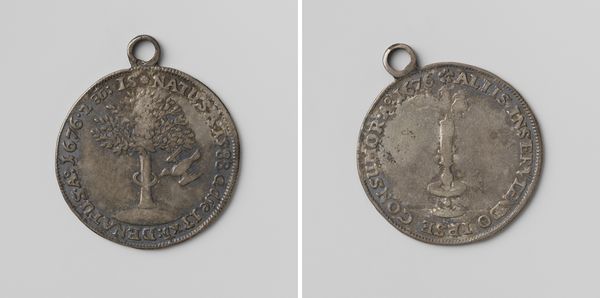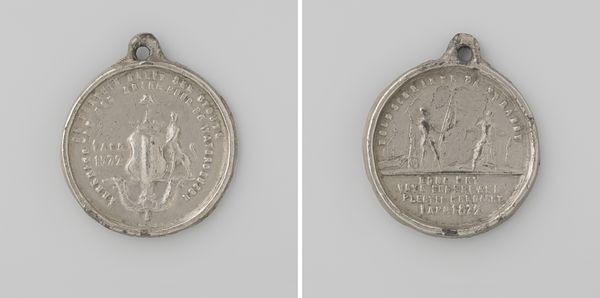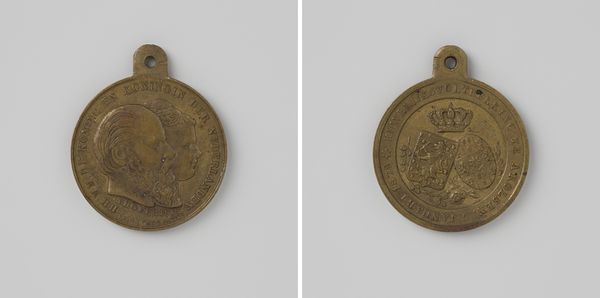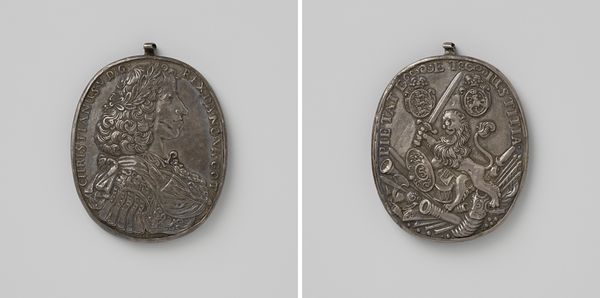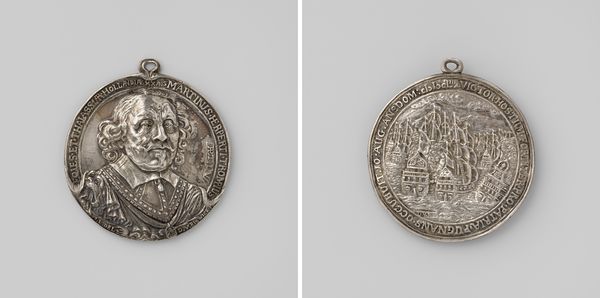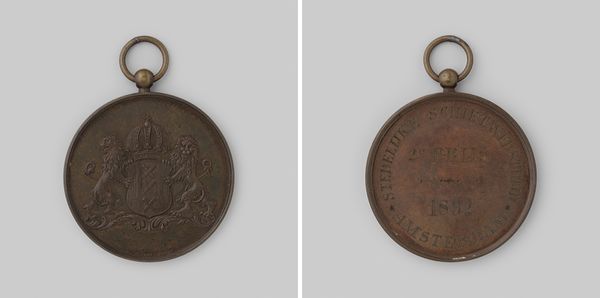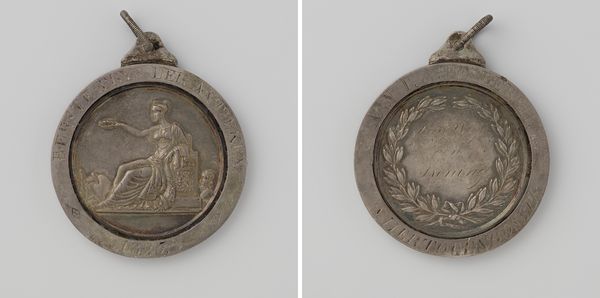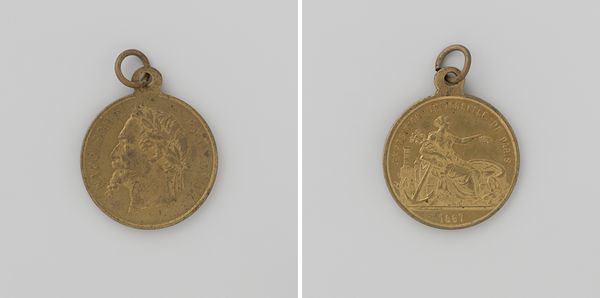
Vijftigjarige herdenking van Nederlands onafhankelijkheid gevierd in Den Haag ("Oranjepenning") 1863 1863
0:00
0:00
Dimensions: diameter 2.4 cm, height 2.8 , weight gr
Copyright: Rijks Museum: Open Domain
Editor: Here we have a metal medal, titled "Vijftigjarige herdenking van Nederlands onafhankelijkheid gevierd in Den Haag ("Oranjepenning") 1863," made in 1863 by Willem Pauwels & Zn. It feels like a stoic tribute, a little weighty with the importance of history. I am really intrigued by the relief on it... How do you interpret a piece like this? Curator: For me, this medal whispers tales of a nation finding its voice. See how the relief embodies the Neoclassical style? It's all very deliberate, very… proper. I imagine the figures almost like ancestral voices chiming through time, each with its perspective on what freedom truly means. Does the medal resonate with you on a symbolic level? Editor: Definitely! I'm also drawn to the pairing of the portraits on one side and the bold declaration on the other—almost like two sides of the same coin, where one side embodies leaders, while the other reminds of the fight itself. Curator: Precisely! The medal acts as both object and text, doesn't it? It invites one to remember what those 'ancestral voices' represent and what it means to celebrate. Think of it, too, in the hand of someone proudly wearing it… like a badge of honor. It becomes a tiny declaration of independence, carried close to the heart. It moves beyond just 'object' to encapsulate so many human facets - identity, self-expression, meaning-making... a quiet moment with a big story. What is your reflection on that? Editor: That it is incredible that a simple everyday piece can contain all those historical layers. Now I see a little world contained within a coin! Thanks for the illumination! Curator: You are most welcome, a fresh eye gives old relics their voice back. It all comes down to our connection to an object. Our own 'now' with a former 'then', how does that help form us and others to form a future "when?"
Comments
No comments
Be the first to comment and join the conversation on the ultimate creative platform.
